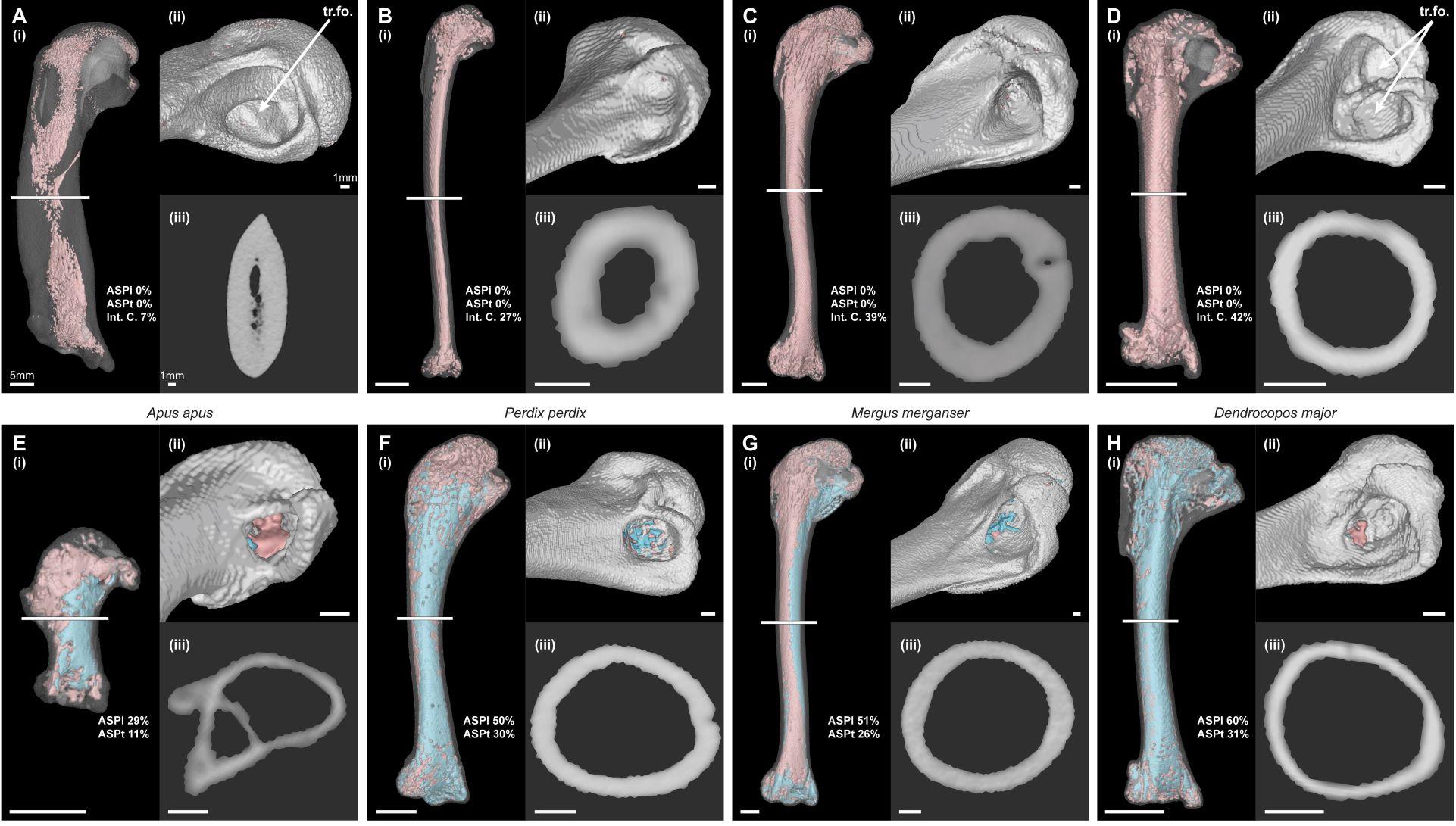
Submitted by Dr C.M. Martin-Jones on Fri, 24/03/2023 - 14:33
Scientists have known for centuries that birds have hollow bones, but the exact benefits of this trait — from making them lighter for flight to even helping them breathe more efficiently — have been relatively understudied.
Now, researchers from the University of Cambridge have used high-resolution CT scans to digitally dissect the bones of sixty different bird species, allowing them to examine the internal structure of their skeleton more accurately.
“This is the first time that anyone has peered inside the bones of fresh bird specimens in this way, allowing us to quantify the distribution and varying volumes of air and marrow within bird bones,” said Cambridge Earth Science’s Grace Burton, lead author of the study.
The innovation allowed the researchers to test out theories as to why some birds have more air filling their bones than others. “The axiom that birds have 'hollow bones' will be familiar to anyone with an interest in birds,” said Daniel Field, senior author of the paper, also from Cambridge’s Department of Earth Sciences. “But the extent to which bird bones are actually full of air as opposed to marrow had never previously been investigated.”
Until now, studies have been unable to distinguish between the relative amounts of air and marrow within bird skeletons, but the new study presents an approach that enables this important distinction to be made. The researchers homed in on a specific bone — the humerus — which is one of the most commonly air-filled bones in a bird’s skeleton.
“Our new method meant we were able to re-examine some of the long-standing hypotheses about why birds have this unusual characteristic,” said Burton. Scientists have previously suggested that the size of a bird’s body is related to the amount of air it carries inside its skeleton, with larger, heavier birds compensating by having a greater number of air-filled bones.
Their findings add a new dimension to that existing hypothesis, “We found that larger birds tend to have more air filling their air-filled bones and their bones are generally thinner.” She explains that, by replacing heavy marrow and even heavier bone tissue with air, larger birds are still able to manoeuvre swiftly.
But they did find some complexities, even when considering relatively closely related birds. One example is the Long-tailed Duck — the deepest diving sea duck — which they found to have thick, marrow-filled bones. This trend is observed amongst many aquatic diving birds because it gives them extra weight to counteract their buoyancy in water, which requires even more energy for diving. In contrast, they found that other ducks, like the Eurasian Teal (a dabbling duck that spends most of its life in the shallows and doesn’t submerge its entire body underwater) have almost entirely air-filled humeri.
“This investigation clarifies our understanding of one of the most distinctive features of modern birds,” said Field, “We are also starting to understand why this feature varies so much, even amongst birds of the same group.”
Burton, M. G. P., Benson, R. B., & Field, D. J. (2023). Direct quantification of skeletal pneumaticity illuminates ecological drivers of a key avian trait. Proceedings of the Royal Society B, 290(1995), 20230160.
